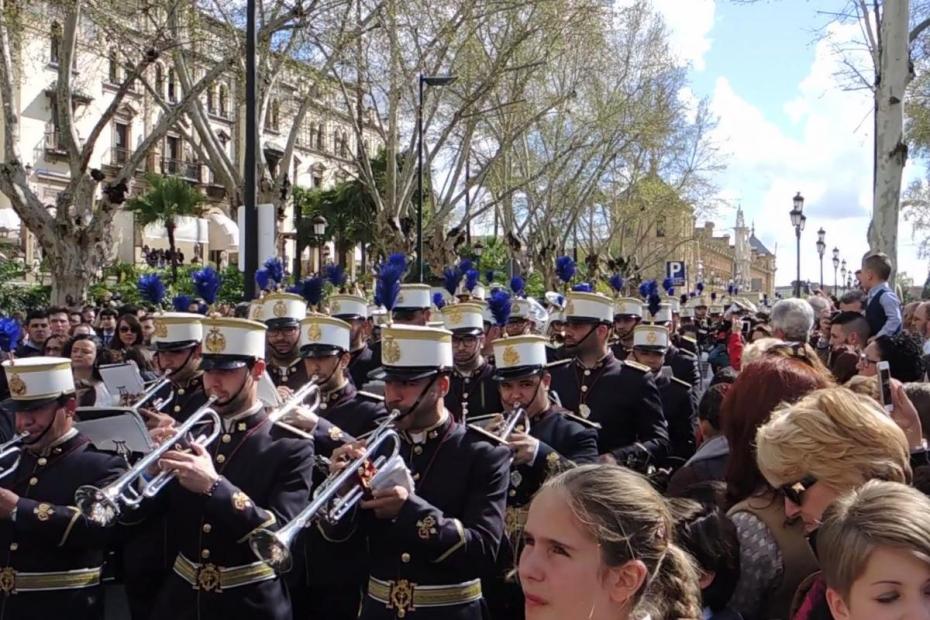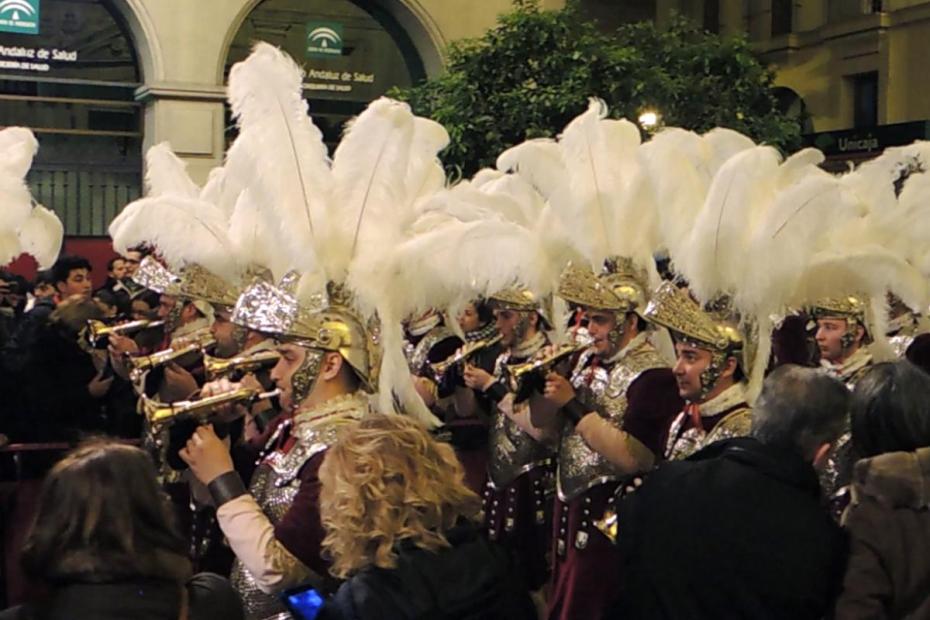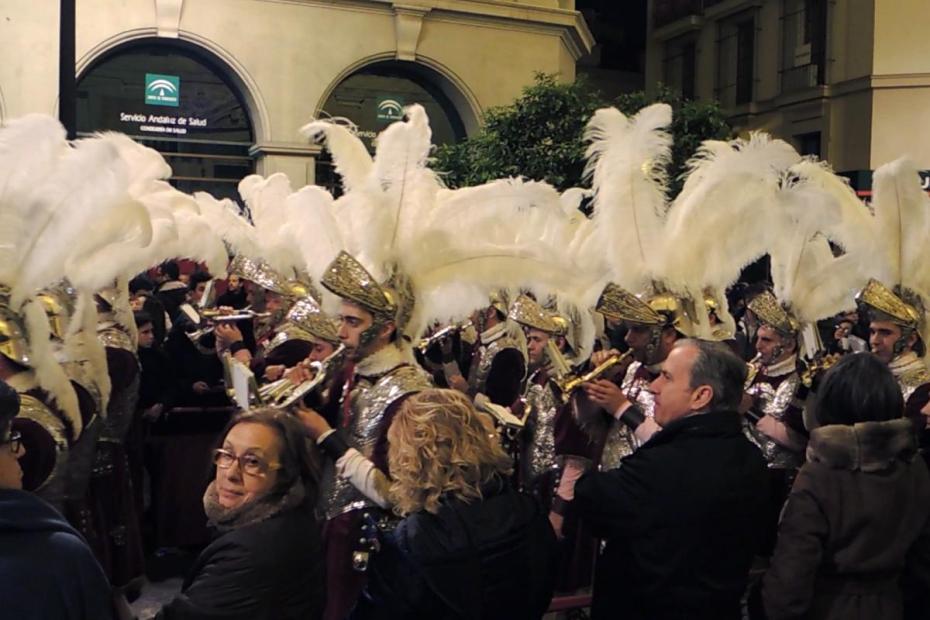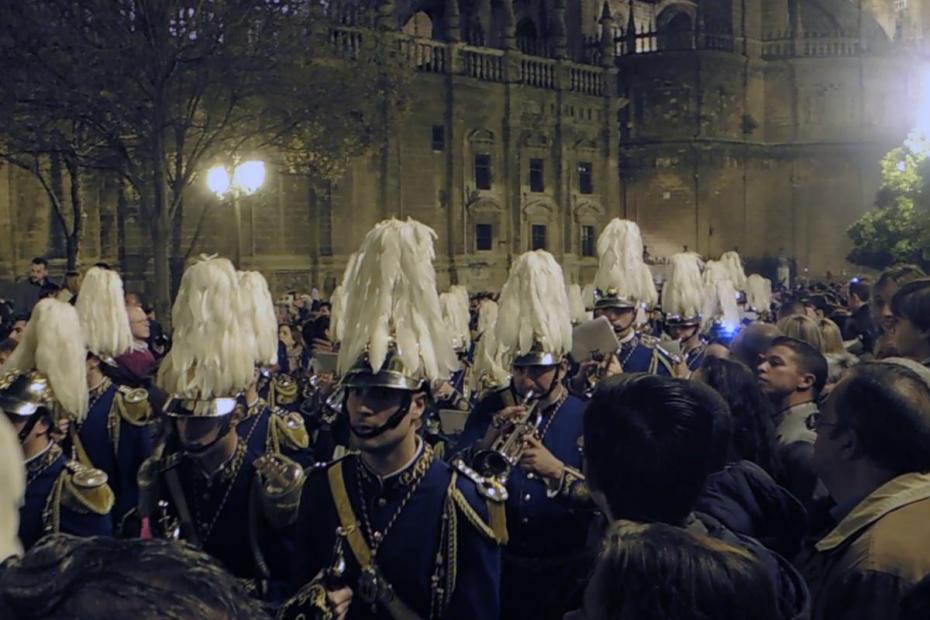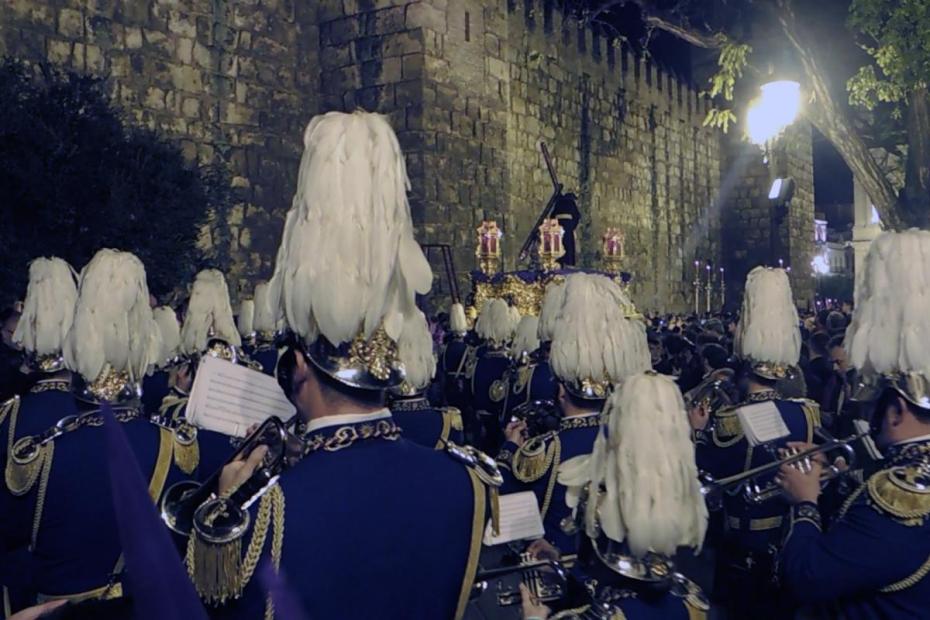Two forms of music, marches and saetas — musical forms that are not, in other parts of the world, readily associated with Catholic religious music — are integral parts of Semana Santa processions in Seville. Holy Week processions are silent for long stretches of the 25 to 100 or more minutes they might take to pass a given point. But almost every procession includes marching bands to accompany the pasos, the huge, heavy floats with images of Jesus and Mary that are at the heart of each procession. (The notable exception is a brotherhood whose common name, El Silencio, makes clear that silence could distinguish a procession). The visual power of a candle-lit paso in the night, its rocking movement from the steps of the men who carry it, and the strength and often mournful sound and of the brass and drums of the marching bands can impart a foreboding power that the even the videos here can’t fully communicate.
Musical accompaniment by marching bands became a standard element of the processions in the mid 19th century.1 Until 1975, these were often military or police bands. Today’s bands, no longer linked to the military or police, often still perform in some kind of antique military uniform. Musicians accompanying La Macarena brotherhood’s paso de Cristo are dressed in Roman soldiers’ outfits with huge ostrich-plumed headgear.
Brass — trumpets, cornets, bugles, tubas, trombones — and percussion are the instruments of Semana Santa processions. The contemporary repertoire of marches spans almost a century. The most popular marches today include La Saeta (1969), Alma de Dios (1969), Consuelo Gitano (1993), Nazareno y Gitano (1986), Nuestra Señora de Consolación y Lágrimas (1929) and Al Santísimo Cristo del Amor (1944).2 The music draws on classical and operatic themes from the mid-19th century, and on military marches. Underperformed old works are occasionally revived, and new marches continue to be premiered annually, though even the newest of these are defined in by 19th and 20th century precedents. 3
Saetas
At occasional spots along the route, the processional image of Jesus or Mary is serenaded with a saeta (arrow), a very emotional, mournful, and particularly Andalucian style of song, typically sung in a flamenco style.4 A singer on a balcony or on the street sings to the image of Jesus or the Virgin with haunting melodies and words that recall the suffering of the Passion as experienced by Jesus and by the Virgin. Normally the procession stops and the marching band is silent to allow the saeta to be sung and heard in full.
Saetas are occasionally performed in concert settings, but are really devised as a musical devotional form to be sung specially for the processions, not even in liturgical settings. The text of a saeta is normally six lines or fewer, and typically describes the sorrows that Jesus or Mary endured in the Passion. It is sung solo and unaccompanied by instruments, as a prayer.
The online music service Spotify offers more that 130 albums of Semana Santa marches and saetas.
Read more
José Manuel Castroviejo López, De Bandas y Repertorios: La Música Procesional en Sevilla Desde el Siglo XIX (Seville: Editorial Samarcanda, 2016).
Two helpful web resources in Spanish, with links to many marches, are Patrimonial Musical and Marchas de Cristo.
- 1José Manuel Castroviejo López, De Bandas y Repertorios: la música procesional en Sevilla desde el siglo XIX (Seville: Editorial Samarcanda, 2016), 113.
- 2Popularity is determined according to the number of times it has been recorded, according to the website Marchas de Cristo, as accessed July 30, 2017.
- 3Pablo Borrallo, et. al., Atlas de la Semana Santa de Sevilla (Seville: Ediciones Alfar, 2016), 81-85.
- 4Andalucia is the southernmost region of Spain. Seville is one of its most important cities.
